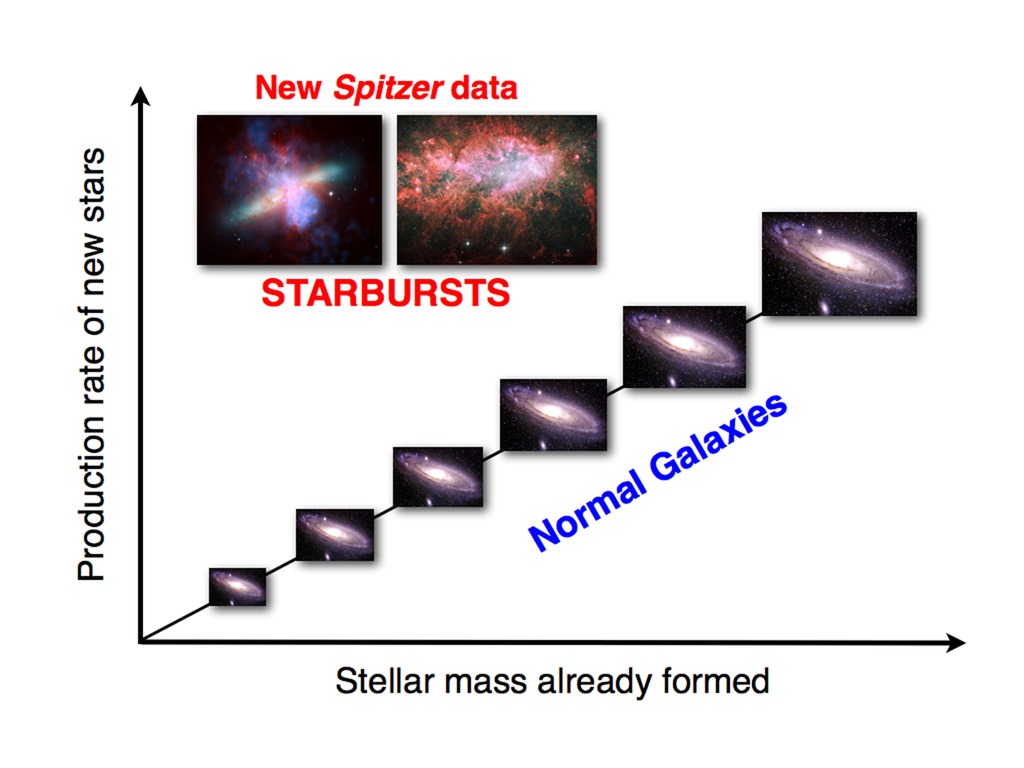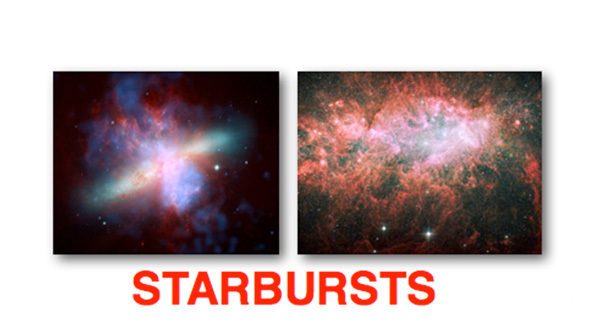
Credit: NASA/JPL-Caltech/K. Caputi (University of Groningen)
Collage • October 30th, 2017 • ssc2017-15a
ssc2017-15a
Over their individual histories, the vast majority of galaxies are thought to produce stars at relatively slow rates. This slow-and-steady pace has continually added to the overall population of stars in galaxies and, by extension, the broader universe, as illustrated along the horizontal/x-axis of this diagram.
Sometimes, however, galaxies can enter a starburst phase, where they crank out new stars at rates hundreds of times faster than normal, depicted in the vertical/y-axis. Starbursting galaxies have been thought to be a rare occurrence. But a new study using NASA's Spitzer Space Telescope has revealed that in the epoch 1.5 billion years after the Big Bang, around 15 percent of galaxies were undergoing these bouts of frenzied starmakingfar more than previously evidenced.
Given the number of starburst galaxies, the study finds them responsible for producing more than half of the total new stars in the early cosmic era under study. Starburst galaxies therefore likely played a major and underappreciated role in creating our universes stars.
About the Object
- Name





